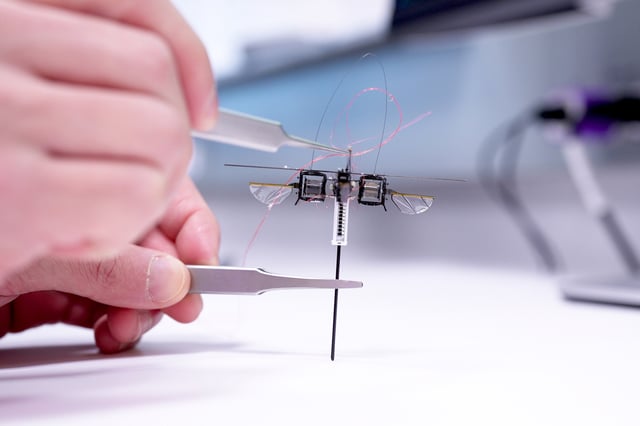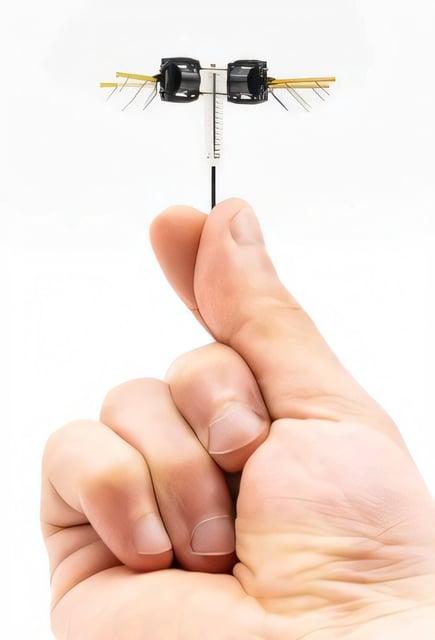Overview
- The robot uses a spring-driven leg and four flapping wings to jump up to 20 cm, traverse uneven terrains, and maintain stability mid-air.
- It consumes 60% less energy compared to similar-sized flying robots, enabling greater operational efficiency and endurance.
- Weighing less than a paperclip, the robot can carry payloads up to 10 times its weight, making it suitable for tasks requiring additional sensors or circuits.
- Advanced control systems and external motion-tracking ensure precise landing and orientation, even on dynamically tilting surfaces.
- Future developments aim to integrate autonomous capabilities, enhancing its potential for disaster response and other confined-space applications.

